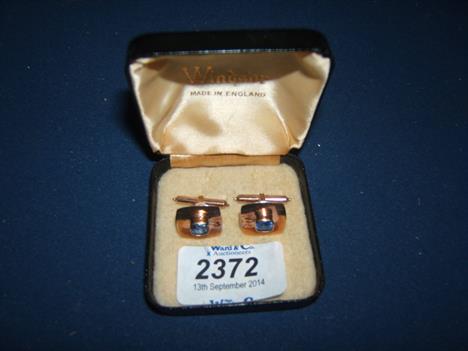We found 400965 price guide item(s) matching your search
There are 400965 lots that match your search criteria. Subscribe now to get instant access to the full price guide service.
Click here to subscribe- List
- Grid
-
400965 item(s)/page
A collection of Norman Underhill modelled ceramics to include a group of four men sat on a low stone wall, 16 cm tall x 26 cm long, a figure of a man sat in a chair with the sign Any Tea In The Pot?, a group of three very small figures, all about 6 cm tall and two models of working men`s boots, all signed Norman Underhill
INDJI (1912-DECEASED) Garaphon and his Bullroarers (circa 1963) natural earth pigments on eucalyptus bark 93.5 x 66 cm PROVENANCE Private Collection Important Aboriginal Art, Sotheby`s Australia, Melbourne, 30 June 1997, lot 145, illustrated Private Collection, New South Wales The original label that accompained this work (now lost) read: `According to Murrinh-Patha mythology, long ago in the Dreamtime a man called Garaphon made a bullroarer, and inscribed thereon a series of patterns. He called together all his friends and each danced his own special dance. Garaphon whirled his bullroarer around his head and it fled into the creek. Afterwards, an old man found the bullroarer when fishing and believed it was "proper business". He called together the old men and they performed a corroboree excluding all women and men. The corroboree is known as "Sunday Business," a term believed to be only comparatively recent in origin, probably only over the last sixty years, and thought to have come from New Guinea. The corroboree is held in secret in the bush and young men are initiated. A number of bullroarers are made, each one having inscribed thereon the pattern of a dance reminiscent of the special dance performed by each man at Garaphon`s corroboree long ago. Also, bullroarers are made and inscribed exactly the same as the one Garaphon made and lost in the creek. A large ring is made in which the young men sit and watch and listern to the "Boss man" and his aids singing and dancing the story of Garaphon and other birds (it is believed that Garaphon turned into a bird after death). The corroboree goes on night and day for about two to five months and should any women see any of the initiates or the dancing all the local women are punished. In this painting the artist has shown two of the bullroarers used in the Garaphon corroboree. The path to the corroboree ground is shown and some of the food which is hunted and prepared before the ceremony starts. Hunters are shown with woomeras and spears, and hunters are very important men in the tribal structure. Stone axes are also depicted.`
A carved stone polychrome decorated figure group of the Pieta, possibly lower Austria, mid 15th century82cm high, 80cm wide, 32cm deepProvenanceGraham Cornall Antiques, MelbourneThis polychrome limestone sculpture represents the Pieta, in which the Virgin Mary cradles the dead body of her son. While the most famous example of this image type is the sculpture by Michelangelo in St Peter’s Basilica, the subject is derived from northern examples and was adopted quite late in Renaissance Italy. The Pieta, also referred to as Vesperbild, first appeared in German sculpture in around 1300 where early images often show the body positioned vertically, similar to depictions of the Deposition from the Cross, and also draw attention to the wounded, emaciated body. As the subject became more widespread, varied iconographies emerged. The type we see in this work, where Christ’s body lies horizontally across his mother’s lap, probably developed first in France. This image, which became especially popular, draws a symbolic connection between the lap of the Virgin and the Church altar on which, according to Catholic doctrine, the Eucharistic body of her son lies. The image therefore emphasized the salvific nature of Christ’s sacrifice and the redemptive power of the sacrament. Indeed, here the body is tilted up towards the viewer to accentuate the devotional focus on his humanity.The subject of the Pieta probably derived from mystical and popular devotional writings where events in between those described in the Gospels are imagined, suggesting an insight into the human, emotional responses of holy figures. Here the notion of Mary’s response to the death of her son and her cradling of his body before he is entombed is articulated with great sensitivity. Mary supports her son’s head with her right hand, while her left holds the edge of her cloak at her chest, suggesting that she is about to wipe her tears (as she is shown doing in numerous other Pieta sculptures). The faces of the figures are especially beautiful; Christ’s is gentle and relaxed while the Virgin’s subtly but very effectively suggests her sorrow. She looks not at her son, as is the norm for Pieta imagery, but to the distance; a detail that invests the image with a more meditative and poignant tone.As the sculpture is relatively well finished at the back and has a carved out section at the lower rear where it was anchored, it seems possible that it was originally positioned on a tomb. The subject probably, therefore, was intended to comfort the grieving. The composition of the figures demonstrates the extraordinary skill of the artist. It appears entirely natural, even ‘though in reality such a grouping would likely be awkward and unfeasible.Dr. Bronwyn Stocks
Mixed gold and costume jewellery; including two modern design quartz set 9 carat dress rings,sterling silver mounted crystal form amethyst specimen brooch, two Chinese silver filigree brooches, one enamelled and set with carved jadeite in the form of a bat, coloured stone set scorpion brooch etc
-
400965 item(s)/page




























































